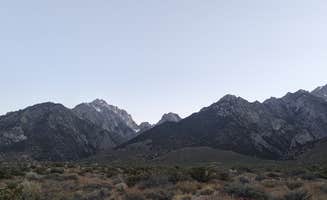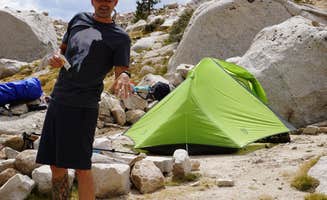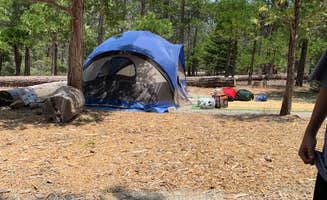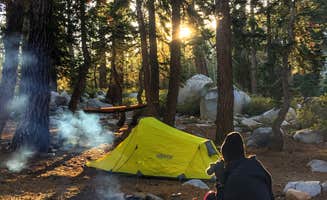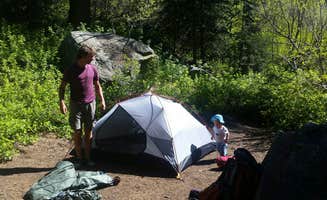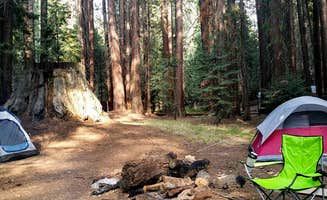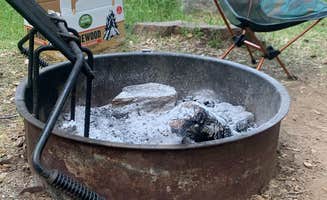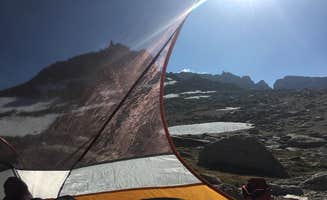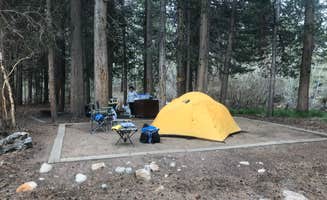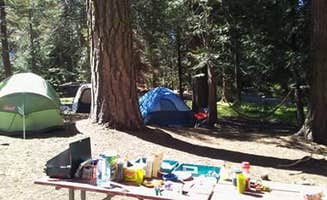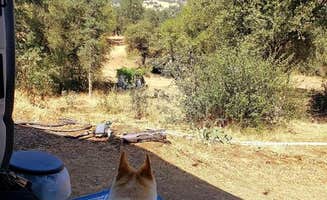Tent camping near Seven Pines, California positions visitors at elevations typically between 6,000-10,000 feet in the eastern Sierra Nevada range. Summer temperatures average 70-85°F during day and drop to 40-50°F at night, creating ideal conditions for high-altitude camping from June through September. Winter snowfall makes many backcountry campsites inaccessible from November through April, with road closures common at higher elevations.
What to do
Fishing alpine lakes: Several high-elevation lakes near Seven Pines offer fishing for Golden Trout. At Cottonwood Lakes Backcountry Campsite, visitors can access multiple fishing spots. "My brother caught multiple Golden Trout while fishing at Lake #3 and #5," reports one camper who used this area while hiking to Mt. Langley.
Acclimatization hiking: Before tackling higher summits, shorter hikes help adjust to elevation. "We wanted to give ourselves time to adjust to the altitude. I'm so glad we did, because the overnight camp at Cottonwood Lakes was an adventure in and of itself. We saw marmots and even a bighorn sheep!" notes a hiker who stayed at Cottonwood Lakes.
Morning wildlife viewing: Early risers can spot diverse wildlife in meadow areas. At Horseshoe Meadow Campground, one camper observed "Coyotes, fox, deer and if you hike high enough you might see some bighorn sheep. The night sky splashed with the Milky Way visible most nights."
Stream exploration: Water levels vary seasonally in the small streams throughout the region. "There are sites located along the East Fork of the Kaweah River from which you can climb down into the River. In spring, some river sites have some flooding because of rain and runoff. Note that the water is COLD, even in summer," explains a regular visitor to Cold Springs Campground.
What campers like
Spacious tent sites: Many campgrounds offer generous spacing between sites. "The campsite I had made this place great. Some of the sites were not so great. The campground in a whole is amazing," reports a camper at Cold Springs Campground, highlighting site variability within the same campground.
Trailhead proximity: Quick access to trails ranks high among camper preferences. "Great for tent camping, but no pull-in or flat spots if you're sleeping in your vehicle. I slept in the equestrian campground since those were back-in sites, but if there are horses you're not allowed to do that. The hike to the base of Langley was great though!" notes a visitor to Horseshoe Meadow.
Elevation gains: Seven Pines tent sites position campers at higher elevations with cooler temperatures. "We stayed here the night before a 2-night backpacking trip into Mineral King. Great for acclimating to the elevation. I don't think I would drive here just to stay here though. The crazy drive up isn't worth it!" explains a camper who visited Cold Springs.
Vault toilet access: Basic facilities available at most established sites. At Cottonwood Lakes Trailhead Campground, "It was a convenient place to park, because you drive right up to the trailhead, and there are trash cans, bear boxes, and vault toilets... Toilets were pretty clean."
What you should know
Road conditions: Many campgrounds require navigating challenging roads. "While driving, you'll lose service after you turn off Mineral King then you have 23 miles of slow roads, took me a little over an hour the view are great just be ready," advises a Cold Springs camper.
Bear safety requirements: All tent camping sites require proper food storage. At Symmes Creek, visitors should note there are "No facilities, so make sure you have enough water and power to get you through. Gorgeous night sky for stargazing!"
Water availability: Sources vary by campground and season. "Unfortunately, the potable water spigots were already turned off. The national forest website said they are off in the winter, but I didn't expect that already in early September," reports a Cottonwood Lakes Trailhead visitor.
Fire restrictions: Regulations change seasonally and vary by location. "You are required to use a bear canister for overnight camping. Your toiletries, wrappers, trash, and food must fit in there, so plan accordingly. We used Bearvault bv450, for 3 people, and barely fit everything in there," notes a Cottonwood Lakes Backcountry camper.
Tips for camping with families
Choose riverside sites: Water features provide natural entertainment. "One of the best campgrounds we've stayed at. Water nearby, no flies or mosquitoes, good distance to other sites and nature all around. Take spot #8, if available. It is the best. We even had a deer family visiting," recommends a Cold Springs visitor.
Attend ranger programs: Weekend educational events enhance the experience. A Cold Springs camper noted, "The campfire events on weekends are good. Fine effort by the rangers. Great hiking without the crowds of Sequoia."
Select group campgrounds: Some areas accommodate larger family gatherings. At Canyon View Group Sites, "We booked this campground for a family vacation it was everything we hoped for. The site could easily accommodate 20 people. Each site had 4 bear boxes which was plenty for our group."
Consider drive time between attractions: Allow ample travel time between sites. "It is at the bottom of the canyon so if you want to do the activities up in Sequoia National Park it is about a 2 hr drive each way. This did not bother us as we just enjoyed the views," reports a Canyon View camper.
Tips from RVers
Boondocking options: Several dispersed camping areas accommodate RVs. At Symmes Creek, "Dispersed camping on National Forest Land. There's a mile of gravel and then another half mile of dirt road, but if you go slow, most vehicles should be fine. We towed a 30ft travel trailer with no issue."
Size limitations: Many Seven Pines tent camping areas restrict larger vehicles. "The dirt road dead ends at a large spot with easy turn around. There are off shoots of the main road to other camp spots, but we didn't venture down to any of those," notes a Symmes Creek camper describing accessible areas.


